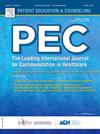The effect of conflicting versus consistent messaging on older women’s support for breast cancer screening cessation
IF 2.9
2区 医学
Q2 PUBLIC, ENVIRONMENTAL & OCCUPATIONAL HEALTH
引用次数: 0
Abstract
Objective
Breast cancer over-screening is common in older women. Messaging about breast cancer screening cessation may reduce over-screening but the broader informational environment often emphasizes screening continuation. We aimed to examine the effect of receiving consistent messages about breast cancer screening cessation versus conflicting messages (i.e., receiving messages about screening cessation and screening continuation from different sources).
Methods
In a two-wave survey experiment with 3809 women 65 + years from a U.S. population-based online panel, we randomized participants to a) no messages, b) consistent messages promoting screening cessation, or c) conflicting messages – a message promoting screening continuation followed by a message promoting screening cessation.
Results
The conflicting message group had significantly lower support for screening cessation in a hypothetical older woman (mean 3.87 [SD 2.00] on 7-point scale, 95 % CI 3.76–3.97) compared with the consistent message group (mean 4.17 [SD 1.99], 95 % CI 4.08–4.28), but was still significantly higher than the control group (mean 2.68 [SD 1.87], 95 % CI 2.54–2.82, p’s < 0.001). Message effects on self-screening intentions were similar. Participants reported low rates of confusion, distrust or ambivalence.
Conclusions
Messaging about screening cessation can significantly increase older women’s support for screening cessation, with low rates of negative reactions, even if there are competing messages on continued screening.
Practice implications
Messaging about screening cessation can be incorporated into clinical discussions or used in conjunction with other interventions aimed at reducing over-screening.
求助全文
约1分钟内获得全文
求助全文
来源期刊

Patient Education and Counseling
医学-公共卫生、环境卫生与职业卫生
CiteScore
5.60
自引率
11.40%
发文量
384
审稿时长
46 days
期刊介绍:
Patient Education and Counseling is an interdisciplinary, international journal for patient education and health promotion researchers, managers and clinicians. The journal seeks to explore and elucidate the educational, counseling and communication models in health care. Its aim is to provide a forum for fundamental as well as applied research, and to promote the study of organizational issues involved with the delivery of patient education, counseling, health promotion services and training models in improving communication between providers and patients.
 求助内容:
求助内容: 应助结果提醒方式:
应助结果提醒方式:


